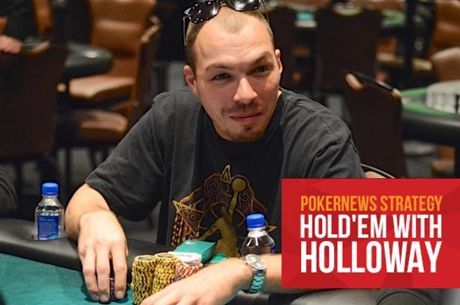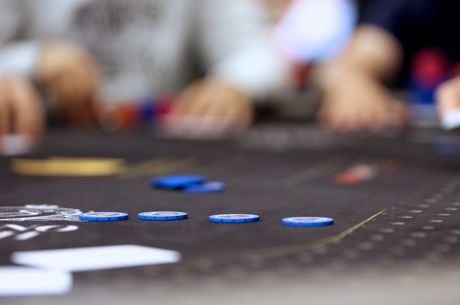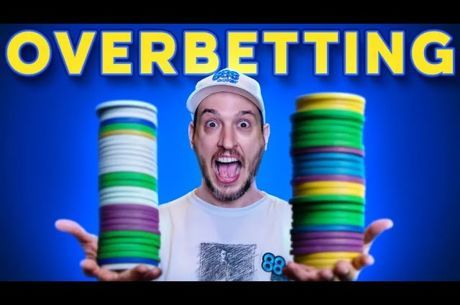Hand Review: How the Big Blind Ante Changes Heads-Up Play

Covering live poker tournaments for a living affords me the opportunity to see countless thousands of hands played out, many of which offer interesting and potentially valuable insights into how players — both amateurs and professionals — play the game. In this ongoing series, I'll highlight hands I've seen at the tournaments I've covered and see if we can glean anything useful from them.
The Scene
At the beginning of the summer, I had the opportunity to go to Las Vegas a little early and do some feature coverage of a very unique event, the World Poker Tour Tournament of Champions.
When you're dealing with a field full of elite players, you're always going to see some hands that catch your eye, and that was definitely the case at the WPT Tournament of Champions. In fact, the very last hand of the tournament stuck with me, and so I wanted to look back a little more closely at it here.
Matt Waxman of Florida (pictured above, left) was in control of a heads-up match with gregarious Lithuanian Matas Cimbolas (right), up 3.2 million to 800,000 at the 20,000/40,000/40,000 level (employing the big blind ante).
The two of them had been battling for about 40 hands, and while both players had been raising most buttons earlier, they began limping frequently once they had reached this new level and increased blinds.
The Action
Cimbolas completed the blind on the button and Waxman checked his option.
The flop came K♦2♥Q♠ and Waxman checked. Cimbolas bet 40,000 and Waxman called. On the 4♠ turn, Waxman checked and called 125,000. The river was an 8♥ and Waxman checked a final time. Cimbolas moved all in for 425,000.
Waxman took a while before acting, using a time extension, then opted to call with Q♣7♦ for second pair. It was good, as Cimbolas had to show his 10♥3♠ for a pure bluff from start to finish. Waxman took the pot and the tournament with his big river call.
Concept and Analysis
What really caught my eye about this hand was, of course, the showdown.
"Wait," I thought to myself. "Why did he have ten-three offsuit? Why didn't he just fold that preflop?"
That's when I realized the effect the big blind ante has on heads-up play. Think about what Cimbolas would be giving up if he were to fold preflop.
Under normal circumstances at 20,000/40,000, there would be a 5,000 ante. In a heads-up situation, that means the total starting pot is 70,000, with the small blind needing to call 20,000 more. With the big blind ante, the pot is 100,000 with the small blind needing to call 20,000 more.
Instead of getting 3.5-to-1 on his money with a call, Cimbolas is getting 5-to-1. Furthermore, with 20 big blinds, he can't afford to be just giving up on pots that already contain more than 10 percent of his stack, or his tournament would be over in a hurry and with a whimper.
It seems clear, then, that the big blind ante forces players to fight for more pots in short-handed situations, especially heads up. Given that and the fact that Cimbolas was going to naturally be working with a lot of weak holdings because of the nature of hold'em hand strength, one solution would be to simply limp his whole range from the button. It seems that's the adjustment he'd decided on, as he limped 10 times or so in a row from his button leading up to this hand.
Considering that Cimbolas is possibly limping any two, that creates some very interesting situations postflop. For Waxman in this hand, the flop seems like a good time to check and call, since many of Cimbolas' limping hands have basically no equity in this spot.
On the turn, Cimbolas barrels again for a bigger sizing, a little over half of the pot, setting up a river shove for a little under the size of the pot. Waxman rightfully continued his check-call line. When Waxman then faces the river shove, what hands can he be expecting Cimbolas to jam?
Cimbolas could have a strong preflop hand that he slow played like aces, ace-king, king-queen, or the like. He could also have a number of two-pair combos, with almost any of them in play since he's limping anything. He might check back the turn with something like 8x4x or 8x2x, but there's still plenty else to worry about.
As for bluffs, backdoor spades look like a prime possibility. With ranges so wide, though, Waxman can hardly discount anything. That's what makes spots like this with the big blind ante so interesting. Waxman's own hand looks like what it is, a mediocre one-pair hand. Meanwhile he's playing against the widest range possible held by an opponent very capable of bluffing.
In the end, Waxman decided there was enough air in Cimbolas's range to call and he looks to have been right since he was up against 10♥3♠.
Some have complained of the effect of the big blind ante on short-handed play. I, for one, think it's going to be awesome if we get to see more situations like this where good players have to mix it up with weak holdings.
What do you guys think?









